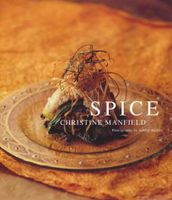Advertisement
Sesame Seeds
Published 1999
Sesame seeds come from a herbaceous tropical plant native to Assyria and are one of the world’s oldest spices, being known since circa 3000bc. These small, flat seeds have a high oil content and a nutty flavour that becomes pronounced after dry-roasting or frying. The seeds range in colour from pearly white to black. The most commonly used are creamy white — these are referred to as white sesame seeds in the recipes in this book. White sesame seeds are ground to a paste to make tahina in the Middle East and to serve with noodles and rice in China. In the Middle East, sesame seeds are used to make the sweet halva. The flavour of black sesame seeds is stronger and more earthy than the creamy white ones. They are best eaten raw as they become quite bitter when toasted. Black sesame seeds are used in Japanese and Chinese cooking and are compatible with sugar and some fruits in desserts. Sesame seed oil is an important ingredient in many styles of cooking, particularly Chinese, but it must be used with caution as it can taste very bitter if used with a heavy hand. Sesame seeds are considered a laxative and can be used as a hot poultice to relieve aches and pains. Available: widely (look for black sesame seeds in Asian food stores).


